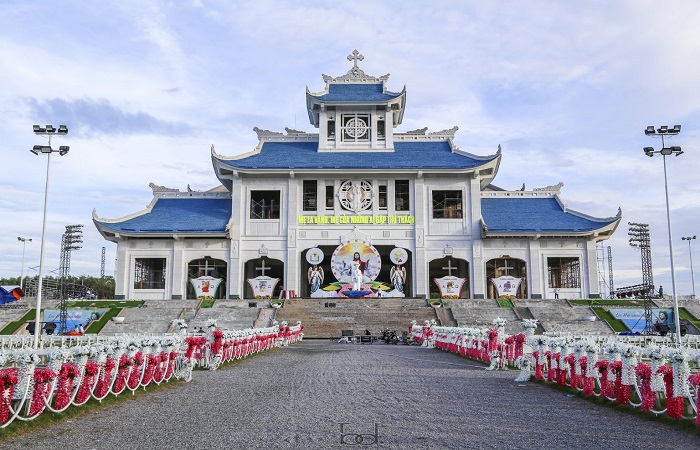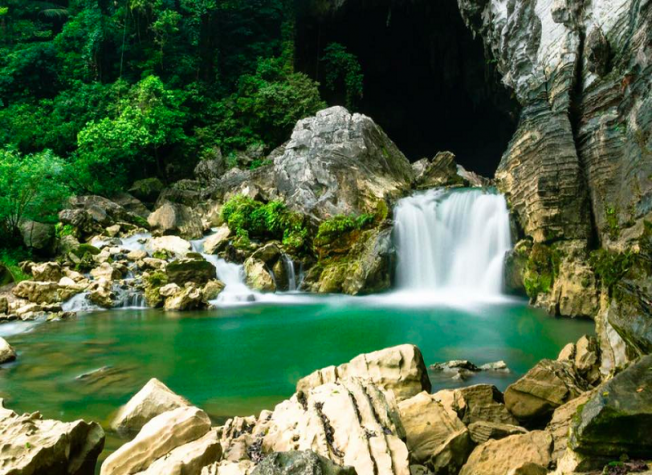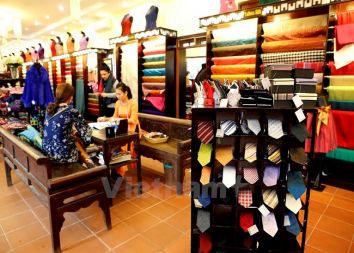La Vang Holy Land Quang Tri Vietnam: All You Need to Know
La Vang Holy Land (Vietnamese: Thánh Địa La Vang) is a holy place and an important place of pilgrimage for Vietnamese Catholics, located in Hai Lang district, Quang Tri province Vietnam, belonging to the Archdiocese of Hue. Our Lady of La Vang is the name that Vietnamese Catholics refer to the apparition of Our Lady during a period when Catholicism was persecuted in Vietnam. The faithful believe that the Virgin Maria appeared in this area in 1798. A church was built near three banyan trees, where they believe Our Lady of Lavang appeared and was declared “Emirate Basilica of La Vang” since 1961.

To this day, the Catholic Church has maintained its undeclared status about the event of Our Lady of La Vang - meaning that it has not officially denied or recognized the event. Religious activities and pilgrimages at that site are still accepted by the Church. This is one of three Catholic pilgrimage centers recognized by the Vietnamese government today.
- Location: Lê Lợi, Hải Phú, Hải Lăng, Quảng Trị Province
-
Opening Hours: + Sunday: 7:00 am - 3:00 pm
+ Weekdays: 5:00am - 7:00pm -
Mass Schedule in La Vang Church:
- Weekdays: 8:30AM
- Sat: 8:00AM - 6:00PM - 8:00PM
- Sun: 6:30AM- 8:30AM - 10:30AM - 12:30PM - 4:00 PM - 6:00PM
- Entrance Fee: Free of Charge
- Dress Code: Comfortable & Decent Cloths Recommended
History of the name "La Vang":
According to one theory, under King Canh Thinh, the Tay Son Dynasty (1899-1802) had a policy against Catholicism. So in order to avoid the punishment of the Tay Son Dynasty, many parishioners in Quang Tri ran up to this land. This is a remote mountainous area, so in order to communicate with each other, they have to "Shout – La in Vietnamese" loudly, and "Loud – Vang in Vietnamese" to be "sound". The name La Vang was born because of that.

A similar theory about the "scream" has changed from the characteristic of the sound to a proper noun, saying that this forest place used to be inhabited by many tigers and leopards. Therefore, those who go to the forest, if they stay at night, often share the vigil, and when they see the movement, they "scream" for everyone to come to the rescue.
Another explanation is that when the parishioners ran to this land when there was an epidemic, at that time Our Lady appeared and instructed them to look for a special type of leaf called Lá Vằng - cook in hot water then drink it as medicine to cure the disease. Write "Lá Vằng" unsigned to La Vang in foreigne language.
Another theory is that the place "La Vang ward" existed before, belonging to Co Vu village, located to the west, far from Dinh Cat fortress, then the provincial capital of Quang Tri, 4 km and far from Phu Xuan or (Hue Citadel - Click to See >>>), 58 km to the North.
The Epiphany of Our Lady of La Vang:
According to the document of the Archbishop of Hue - 1998, during the reign of King Canh Thinh (enthroned in 1792), with a decree banning religion on August 17, 1798, a number of believers near Dinh Cat hill (Quang Tri commune) had to find a place to hide. They took refuge in the mountains of La Vang. In the sacred forest with poor conditions, lack of food, disease, fear of military officers, fear of wild animals, believers can only trust in God and Our Lady. They often gather together under the ancient banyan tree, together to pray, comfort and help each other.
One day while they were praying the Rosary together in honor of Our Lady, they suddenly saw a beautiful woman, wearing a large robe, holding the Child Jesus in her arms, with two angels holding lamps on either side. They immediately recognized it as Virgin Maria. She showed kindness, tenderness, and comfort to the faithful who were willing to work hard. Mother taught people to pick a kind of leaves available around there, boil water to drink to cure diseases. She gave her promise again: I answered your prayers. From now on, whoever comes to pray to me in this place, I will receive grace according to my will.
The event happened on the grass near the base of an ancient banyan tree where parishioners were praying. After that, Mother appeared many times to support and comfort her prayers in need. Since then, the event of Our Lady's apparition in the mountains of La Vang has been spread throughout the generations, and many people sincerely believe and pray to Our Lady. Our Lady of La Vang is often symbolized by a woman wearing a Vietnamese Ao Dai holding a child who also wears traditional Vietnamese clothing.
History of La Vang Church in Quang Tri Province Vietnam:
The history of the apparition and founding of the church is not clear because it has been too long and has not been recorded since that time, most of it has only oral tradition and many different theories. There is a theory that La Vang church was originally built on the foundation of a Buddhist temple or was a shrine dedicated to Ba (maybe Lady Buddha or Princess Lieu Hanh) for forest people, originally a thatched roof under a banyan tree and fenced on four sides, after the apparition of Mary in 1798, it was given to parishioners to build a place to honor Mary. But there are also other opinions that La Vang was just a deserted area, a remote mountainous area.
According to Bishop Ho Ngoc Can, the oral tradition was that in 1885 the church was burned down, and a group of La Vang parishioners rebuilt the church of Our Lady on the old foundation. Quang Tri parish priest Patinier Kinh in his report in 1894 wrote: "In 1885 the church here, like other churches in the county, did not escape disaster... When peace was restored, I urgently rebuild the small, makeshift church to wait for funding as well as to wait for the situation to be less turbulent." In 1886 (there is a record of 1894), Bishop Caspar (Loc) ordered the rebuilding of the brick temple here, because it took 15 years to complete because it was built on a mountainous area that was difficult to transport materials. In 1901, the first La Vang congress was held on August 8 to celebrate the inauguration of the church.
In 1924, realizing that the tile church was too narrow and had deteriorated, a La Vang temple according to the plan of architect Carpentier was erected instead and inaugurated on August 20, 1928. On the occasion of the 9th La Vang Congress. This cathedral was restored in 1959. During the meeting on April 13, 1961, the Bishops' Conference of Vietnam (South) unanimously decided that La Vang is the National Marian Center. . During the Summer War of 1972, bombs and bullets completely collapsed the Basilica, leaving only the patchy bell tower ruins. Since 1995, the bell tower and related works such as Our Lady's Chapel (a corrugated iron roof behind the ancient tower), the Eucharistic Chapel (built in 2002), the Rosary Square, the platform, the Pilgrimage House (built in 2002). built in 2004), 3 banyan trees (where Our Lady appeared) ... were repaired and rebuilt.
In 2008, the Holy Land was granted an additional 21 hectares of land by the Quang Tri province government to serve religious activities of parishioners. According to Father James Le Si Hien (manager of La Vang Marian Center), this is land that once belonged to the church (23 hectares before 1975) and has now been returned.
On August 15, 2012, the first stone laying ceremony took place to build the new Basilica. The church is under construction, designed in the traditional Asian architectural style of Vietnam, with a capacity of 5,000 people.
Pilgrimage Festival in La Vang Holy Land:
This is a big and quite unique festival in Quang Tri, not only for local Catholics but also for many Catholics from all over the world to attend. According to oral tradition, starting from 1864, there were 30 Co Vu parishioners organizing the La Vang pilgrimage and such pilgrimages take place every year with an increasing number of parishioners, making the pilgrimage to La Vang level from Parish (Cổ Vưu) into District (Dinh Cát).
Since the church was inaugurated, every year on August 15 in La Vang, a pilgrimage festival is often held, called "Kiệu" (every 3 years there is a big festival, called "La Vang Congress"). In even-numbered years, the festival is larger than the festival in the odd years and is called "Great Festival or Kiệu Đại Hội" every three years, and the 100-year festival is larger than the 50-year and 40-year festivals.
Pilgrims to this place can buy Vằng leaves, a type of leaf that is often used as a decoction or drink, which is cool, healthy and antibacterial, which is very good for women after giving birth. Not only that, visitors from all over the world come here to make pilgrimages and ask for blessings that Catholics believe that Our Lady will give them the grace they want.
After a hiatus, since 1990, the local government has allowed worship here again. La Vang has become the most important pilgrimage site for Vietnamese Catholics, with more than half a million pilgrims every year. In addition, Vietnamese Catholics in the United States still organize Maria Congresses to honor Our Lady of La Vang.
How to Get to La Vang Holy Land in Quang Tri?
Distance La Vang Holy Land is about 17 km to/from Dong Ha Train Station, 55 km to/from Hue City, 165 km to/from Phong Nha National Park. So there are many different ways and means of transport to get to La Vang. You can go by railway train, public bus, private car, or motorbike, … depending on your starting points.
If you take the North-South bus (National Highway 1A), to Quang Tri Town - Quang Tri Province, you stop at White Bridge (Cầu Trắng), then take a motorbike taxi or taxi to La Vang Holy Land (4km away). You can also have a stop on the way travelingby Private Car Hue to/from Phong Nha National Park, Hue to/from Vietnam DMZ.
If you take the train, you can get off at Dong Ha Station then take a motorbike taxi or taxi to La Vang Holy Land (16km away) or at Hue station 57km from La Vang. Stop at Hue station, you can rent a car to visit Hue Ancient Capital, then make a pilgrimage to Mother La Vang with Hue Car Rental with Driver.
If you ride a motorbike, on the territory of Hai Phu commune, on the left hand side, there are two entrances about 5km apart, one place has a sign saying "La Vang 4km", and one place has a sign saying "La Vang Holy Land 2km". ” is a fairly wide old road that brings pilgrims to the holy place.
See Also:

![]()
![]()
![]()
![]()
![]()
Best of Vietnam

Best Vietnamese Food You Have to Try in Vietnam
Best Food in Vietnam: Vietnamese Traditional Food is top World well known to be both healthy and...

10 Best National Parks in Vietnam
Vietnam Travel Guide: If you look for the Best Wildlife Discovery Experience in Vietnam, here are...
Read More
Best Souvenir to Buy in Vietnam
If you look for Best Things to Buy when traveling to Vietnam to bring home for your family & friends...
Read More
The 10 Best Places to Visit in Vietnam
Vietnam Travel Guide: Home to an extensive collection of historical and cultural attractions,...
Read More
Top 10 Museums You Should Not Miss in Vietnam
Vietnam, 4.000 years old country has a unique and lengthy history, culture with 54 ethnic groups. It...
Read MoreFind your trip
Vietnam Best Tours
Vietnam Car Rental
Vietnam Travel Blog
- Vietnamese People: Origin, History, Culture and Traditions
- Vietnam Currency: Best ATM and Places to Exchange Money
- Vietnam Map: Regions, Cities & Provinces Map of Vietnam
- What is illegal Things in Vietnam: Rules & Laws for Tourists
- Best Time to Travel to Vietnam to Avoid the Bad Weather
- Vietnam News: Population & Religions of 54 Ethnic Groups









